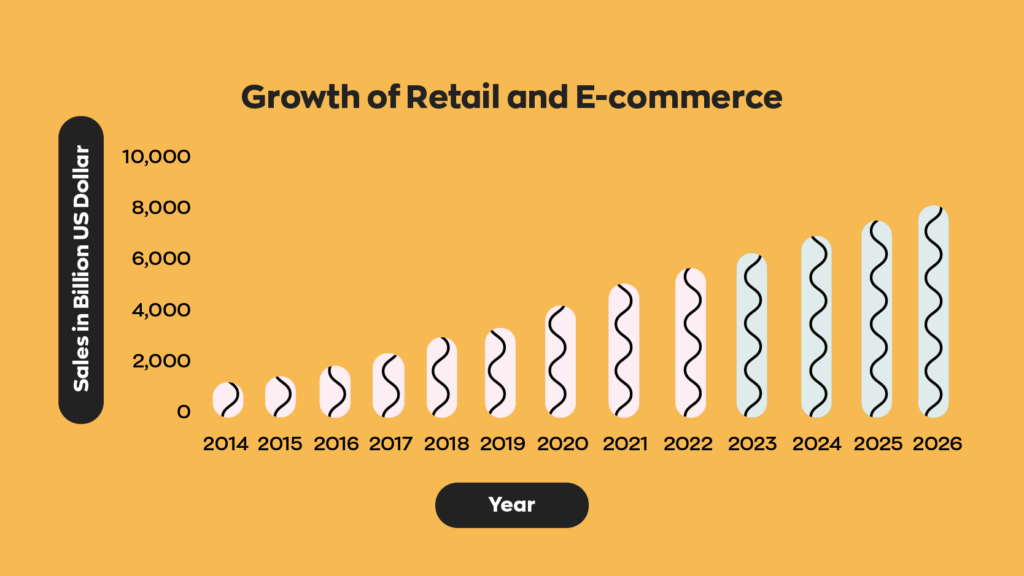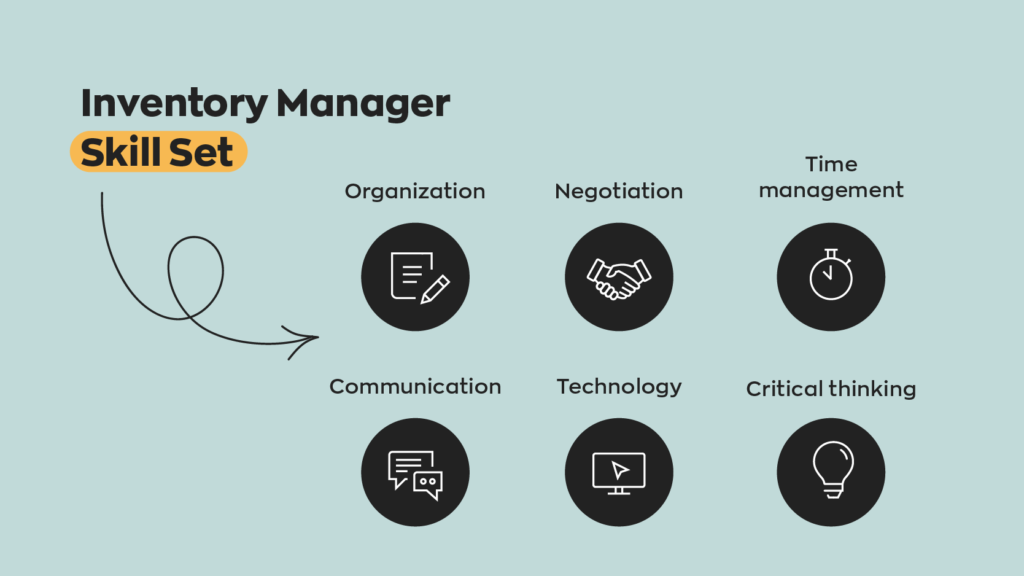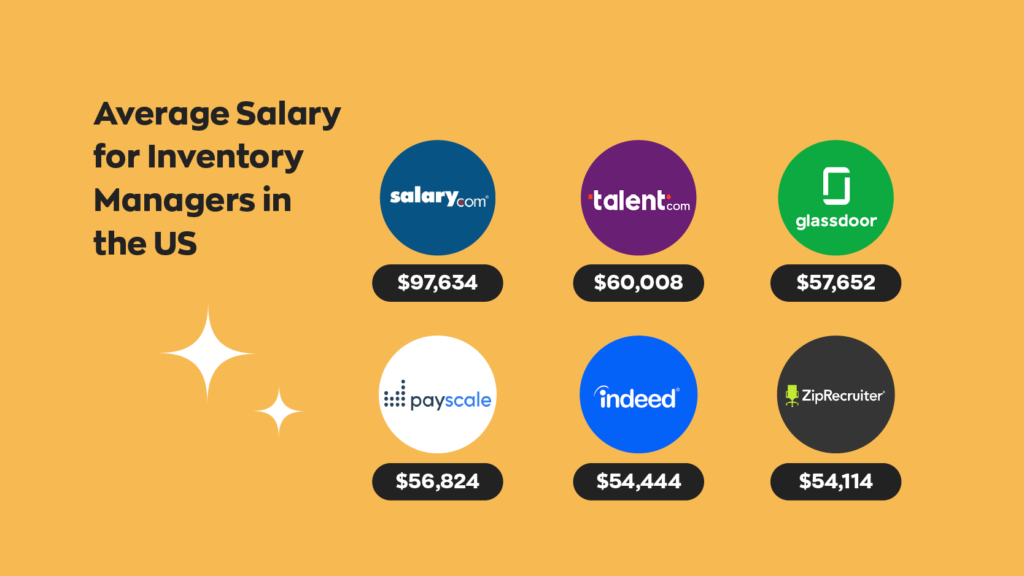Key takeaways
- The responsibilities of an inventory manager vary from tracking inventory levels to purchasing, replenishment, and managing supplier relationships.
- Inventory managers should employ a number of techniques, such as just-in-time inventory, reorder points, safety stock, and first-in, first-out.
- Barcode systems should be utilized whenever possible as they are essential for effective inventory management.
- Inventory managers may also be responsible for overseeing teams of people and optimizing warehouse layouts and workflows.
The inventory manager job description has changed significantly over the years. With globalized supply chains and digitized systems, inventory managers have varied and very important responsibilities. Whether you’re looking to move into the field or develop your skills, knowing what to expect will help you make the right career decisions.
Today, we’re delving into inventory management job descriptions, including what you can expect day to day and how to step into the role.
First, what do inventory manager roles look like today?
Even though inventory manager jobs are not customer-facing, customer needs still shape the role. After all, as Walmart Founder Sam Walton once said:
“There is only one boss. The customer. And he can fire everybody in the company from the chairman on down, simply by spending his money somewhere else.”
This means how much a company spends on inventory, what it stocks, how it manages stock, and how it delivers can all change with market trends. But what does that mean for inventory manager jobs today?
As Deloitte explains, in recent years, the growth of online commerce has led to customers expecting a wider product range. We also expect shipping that suits us, whether that’s next-day delivery, free returns, or more.

This means some inventory managers are dealing with more products, increased demands, and new systems, all of which must ensure a business stays efficient and profitable. So, is there a standard inventory manager job description? what types of duties does an inventory manager job involve?
Inventory manager job description
Let’s get this out of the way right off the jump. No one inventory manager job description fits all roles. Depending on the nature of the business, specific skills or experience might be more important than others. So, don’t forget to look around for a role that suits you!
In large companies, you might find that there are junior and senior inventory manager roles. In others, the position might be combined with, say, merchandising or warehouse responsibilities.
With this in mind, we’ve rounded up some of the more common inventory manager duties you might encounter (in no particular order).
1. Purchasing and replenishing
An inventory manager is responsible for staying on top of stock control by ordering products at the right time. Depending on the nature of the role, they may also need to evaluate suppliers and secure the most competitive prices, which takes specialist skills and an in-depth understanding of the supply chain.
2. Using market knowledge
It’s essential to know not only the product range offered by your retailer or manufacturer but also about the broader market. This could be local or international, depending on where you sell and where your supply chain is based.

3. Preparing reports and documents
You may be asked to deliver inventory reports relating to your role. This requires attention to detail to ensure everyone has the correct information. You may also need to understand documentation such as regulations and compliance.
4. Tracking all inventory
Staff need to know where, when, and how they can access inventory at any given time. This might be any type of inventory, including raw materials, packaging, and finished products. So, an inventory manager’s duties include following a well-organized system that tracks inventory, no matter where it is.
5. Optimize warehouse and storage
Depending on the company, an inventory manager may need to optimize warehouse and storage systems. The layout of your stock affects how quickly you can access it and, therefore, how efficiently it can be picked and packed or used. You should optimize your layout for your picking method.
To find out more, read our recent article on warehouse picking methods.
6. Managing a team
Inventory manager duties include working with people (not just stock!). This might be primarily liaising with suppliers, or it might be leading a team. This usually depends on the size of the company and the hierarchy systems in place.
Inventory management skills
Based on the six typical inventory manager duties listed above, we’ve pulled out some essential skills you’ll need in the role. Please leave us a comment below this article with any you’d like to add.

The importance of purchasing and replenishing
When you think of inventory manager duties, ordering stock might be the first one that springs to mind. While it’s far from the only responsibility, ordering the right stock at the right time is extremely important.
Otherwise, businesses could face stockouts or find themselves holding too much inventory. A stockout could see customers buying from competitors or, at the very least, dissatisfied with your service. Meanwhile, carrying too much stock comes with costs, be it storage, depreciation, or cash flow problems.
Techniques for every inventory manager
No matter the industry or specific role, nearly all inventory managers can benefit from a few basic techniques to get you started.
- Just-in-time inventory – This method has been toted as the gold standard for managing inventory for years. As the name suggests, it’s all about ordering things so they arrive just in time, so you never carry access inventory.
- Reorder points – Setting reorder points for products will ensure you’ll know when you’re running low on something.
- Safety stock – Having items on hand for just-in-case moments is integral for customer satisfaction. This excess stock is known as safety stock.
- First-in-first-out (FIFO) – This method ensures that you use inventory as it comes in, hence the name first-in-first-out.
- ABC Analysis – This technique categorizes inventory based on value and importance, separating items into three buckets, A, B, and C.
- Economic Order Quantity (EOQ) – By using the EOQ correctly, you’ll ensure that you order the optimal quantities by considering factors such as carrying costs, ordering costs, and demand.
How to become an inventory manager
Employers often ask for a degree and work experience for inventory manager jobs. But you may find that sufficient, relevant hands-on experience is all that’s needed.
Some employers also seek proof of CPIM (Certified in Planning and Inventory Management). Some aspiring inventory managers choose to do this to boost their knowledge and skills while working.
The CPIM includes modules such as supply chain overview, strategy, planning, and continuous improvement, amongst others. You can complete this certificate with in-person classes or distance learning.
Looking at current job descriptions and requirements will help you determine what you need to enter the role and how to tailor your resume.
How much could I earn as an inventory manager?
Like any profession, the salary for an inventory manager varies depending on several factors, such as where you live. We’ve compiled a comparison of the average salary for inventory managers in the United States according to several sources.

Warehouse manager job description vs inventory manager job description
If you know that your future career lies in inventory, you might come across similar-sounding job titles, such as warehouse manager. While these roles are linked, they are often distinct.
What is warehouse management?
This involves overseeing inventory and other tasks within the warehouse, including being responsible for warehouse staff and the processes they use, shipping, and other operations. Meanwhile, the inventory manager job description would generally center around anything to do with inventory.
Tools for success as an inventory manager
Having the right tools in place is the key to success when working with inventory. With the right systems, ordering, tracking, picking, and more become much more straightforward, and you can even save money.
Below, we’ve rounded up examples of tools you might use:
Barcoding
Barcodes aren’t just for use on the shop floor (although they’re helpful there, too!). You might work with official, universal barcodes that provide information about your product. Or you might need to create barcodes based on product SKUs for internal use.
You can scan when you receive a product to add it to stock lists, scan to check availability, scan to pick, and more. Basically, you’ll be scanning more and typing less.
Setting up a barcoding system is easy when you know how. Have a look at our handy barcoding guide.
Inventory management software
Having the right software saves time and money. It should be easy to use and provide features that help you manage your inventory from end to end.
At inFlow, we include real-time inventory control, a built-in barcode system, cost and profit data, the ability to track across multiple locations, and much, (much) more.





0 Comments